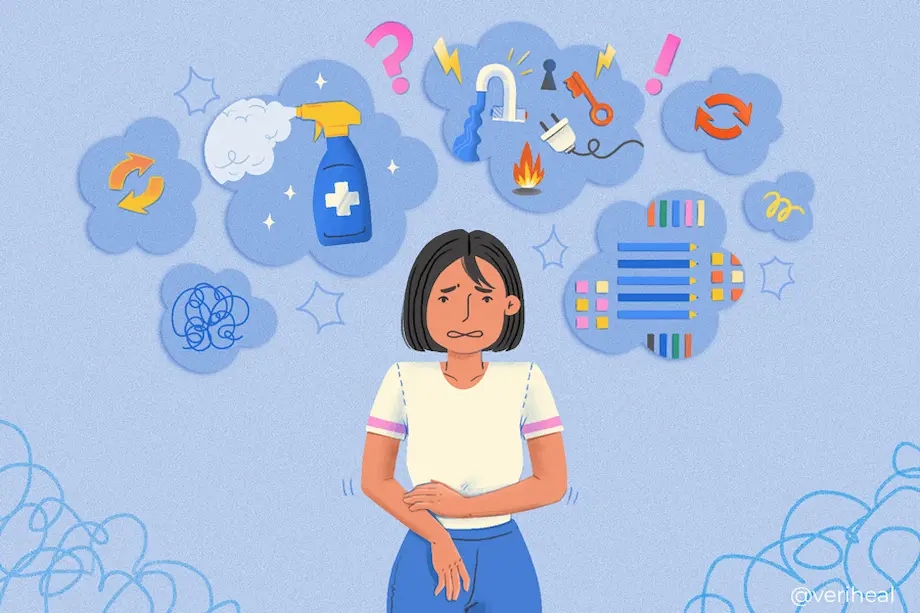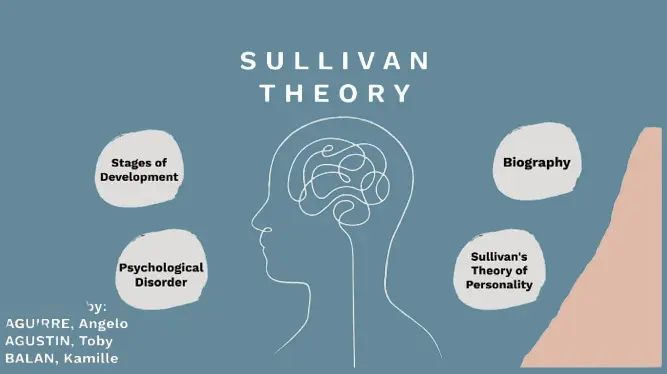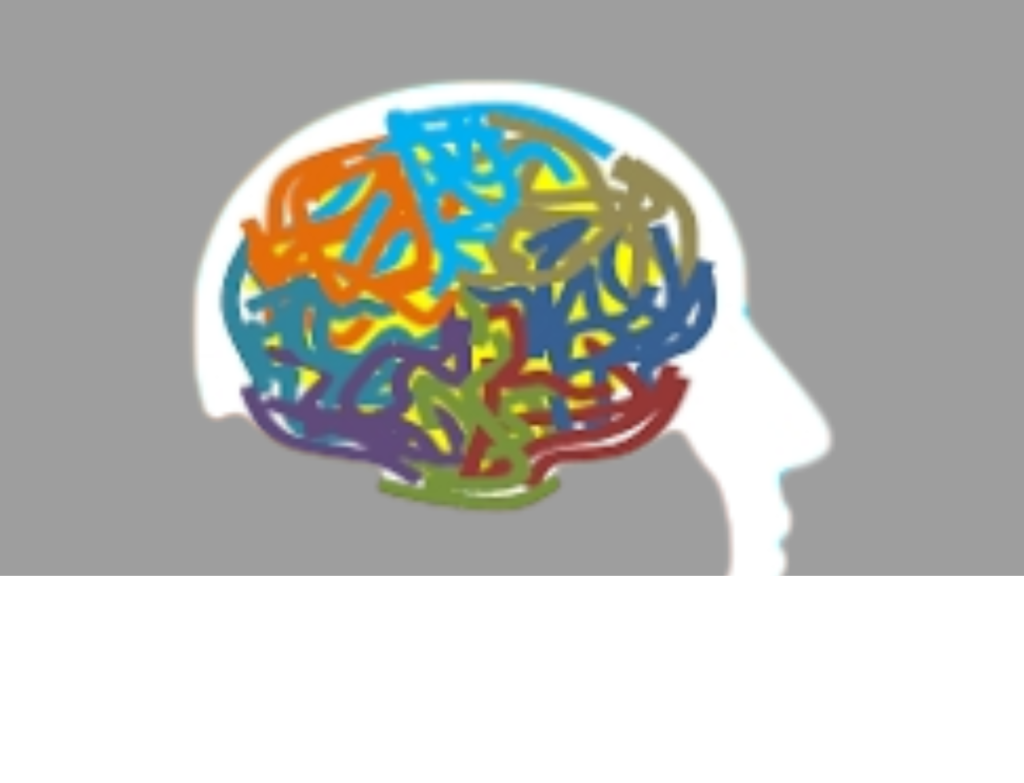Living with Obsessive-Compulsive Disorder (OCD) can feel like a constant battle between your thoughts and your peace of mind. While everyone experiences occasional worries or repetitive habits, for people with OCD, these thoughts and behaviors can take over daily life — shaping routines, relationships, and emotions.

OCD isn’t about being “too clean” or “too organized.” It’s a complex mental health condition that involves unwanted intrusive thoughts (obsessions) and repetitive actions (compulsions) aimed at reducing anxiety. In reality, OCD affects millions of people worldwide and can vary greatly from one person to another.
In this article, we’ll explore what OCD really is, how it affects daily life, what causes it to get worse, the main types of OCD, and practical ways to manage it — from therapy options to natural coping techniques.
What Is OCD Behaviour?
Obsessive-Compulsive Disorder (OCD) is a chronic condition characterized by two key components:
- Obsessions: Persistent, unwanted thoughts, images, or urges that cause anxiety or distress.
- Compulsions: Repetitive behaviors or mental acts performed to reduce the anxiety caused by obsessions.
According to the DSM-5 (Diagnostic and Statistical Manual of Mental Disorders), OCD falls under the category of “Obsessive-Compulsive and Related Disorders.” These obsessions and compulsions take up significant time — often more than an hour a day — and interfere with social, occupational, or personal functioning.
Common OCD Behaviors Include:
- Excessive handwashing or cleaning
- Repeated checking (locks, appliances, doors)
- Counting or tapping rituals
- Arranging objects symmetrically or in a specific order
- Mental rituals (praying, repeating phrases, or seeking reassurance)
While these actions might bring temporary relief, they strengthen the OCD cycle — reinforcing the belief that rituals prevent harm or reduce anxiety.
OCD behavior is not about choice; it’s driven by an overwhelming need to neutralize distressing thoughts that feel uncontrollable.
OCD Symptoms: Understanding the Signs
OCD symptoms are diverse and can change in intensity over time. Some people experience mild forms that are manageable, while others find their symptoms deeply disruptive.
1. Obsessive Symptoms:
These are intrusive, repetitive, and unwanted thoughts that cause anxiety. Common obsessions include:
- Fear of contamination (germs, dirt, illness)
- Fear of harming oneself or others
- Need for symmetry or order
- Fear of losing control or making mistakes
- Unwanted taboo thoughts (sexual, religious, or violent)
2. Compulsive Symptoms:
To cope with the distress caused by obsessions, individuals may engage in repetitive acts or rituals, such as:
- Washing or cleaning excessively
- Checking locks, stoves, or body sensations
- Counting or repeating words silently
- Avoiding situations that may trigger obsessions
3. Emotional and Physical Symptoms:
- Intense anxiety, guilt, or shame
- Fatigue from constant mental tension
- Difficulty concentrating or relaxing
- Social withdrawal due to embarrassment or fear of judgment
These symptoms can vary, but they share one thing in common — they interfere with daily functioning and peace of mind.
How Does OCD Affect Daily Life?
Living with OCD can make everyday activities challenging. Simple tasks like getting dressed, leaving the house, or making a decision can become time-consuming and emotionally draining.
1. Personal Life
Many individuals with OCD struggle with self-doubt and guilt. For example, someone might spend hours rechecking the stove, afraid that a single mistake could harm their family. These cycles can lead to exhaustion and low self-esteem.
2. Work and School
OCD can affect productivity, focus, and performance. Constant intrusive thoughts or rituals might cause delays, absenteeism, or fear of failure.
3. Relationships
OCD often causes strain in relationships. Loved ones might not understand the compulsions, leading to frustration or misunderstandings. People with OCD may seek reassurance repeatedly, or avoid intimacy and social situations altogether.
4. Emotional Health
OCD is often linked with depression, generalized anxiety, and chronic stress. The mental effort of suppressing thoughts and performing rituals can leave a person emotionally drained.
Despite these challenges, with proper treatment and coping strategies, individuals can learn to manage OCD effectively and regain control of their lives.
What Are the 4 Types of OCD?
While OCD manifests differently in everyone, it’s commonly grouped into four major types based on the nature of obsessions and compulsions.
1. Contamination and Cleaning OCD
Individuals fear germs, illness, or contamination.
Example: Repeated handwashing, avoiding touching doorknobs, or cleaning excessively.
2. Checking OCD
Driven by fear of harm or mistakes.
Example: Repeatedly checking locks, appliances, or whether they caused an accident.
3. Symmetry and Ordering OCD
A need for balance, perfection, or exactness.
Example: Arranging objects “just right,” aligning items symmetrically, or needing even numbers.
4. Intrusive Thoughts (Pure O) OCD
Characterized by unwanted mental images or thoughts — often violent, taboo, or blasphemous.
Example: Fear of harming loved ones despite having no intention to do so.
Each type shares a common root: intense anxiety and the urge to neutralize distress through mental or physical rituals.
What Causes OCD to Get Worse?
OCD symptoms can fluctuate — sometimes mild, other times overwhelming. Understanding what makes it worse is essential for management.
1. Stress and Anxiety
High stress levels can intensify obsessions and compulsions. Major life changes, trauma, or even daily stressors can act as triggers.
2. Avoidance and Reassurance
Avoiding triggers or seeking constant reassurance might provide temporary comfort but strengthens the OCD cycle long-term.
3. Fatigue and Sleep Deprivation
Lack of rest reduces emotional resilience, making intrusive thoughts more frequent and distressing.
4. Substance Use
Alcohol, caffeine, or stimulants can heighten anxiety and worsen compulsive behavior.
5. Lack of Treatment
Untreated OCD tends to reinforce itself over time. Without therapy or coping techniques, rituals become more rigid and consuming.
The good news is — with awareness, support, and the right treatment — symptoms can improve significantly.
OCD Treatment: Effective Ways to Manage and Recover
While OCD cannot always be “cured” completely, it is highly treatable with the right approach. Early intervention and ongoing support make a significant difference.
1. Cognitive Behavioral Therapy (CBT)
The most effective psychotherapy for OCD. It helps individuals identify distorted thinking patterns and replace them with balanced, realistic thoughts.
2. Exposure and Response Prevention (ERP)
A form of CBT specifically designed for OCD. It involves gradually facing fears (exposure) without performing rituals (response prevention). Over time, anxiety decreases naturally.
3. Medication
Selective Serotonin Reuptake Inhibitors (SSRIs) such as fluoxetine or sertraline are often prescribed to manage obsessive and compulsive symptoms.
4. Mindfulness-Based Therapies
Helps individuals observe thoughts without judgment, reducing the need to control or suppress them.
5. Support Groups and Psychoeducation
Connecting with others who understand OCD can reduce shame and isolation. Learning about the disorder also helps individuals and families manage symptoms more effectively.
6. Lifestyle Adjustments
- Maintain a structured daily routine
- Engage in regular physical activity
- Prioritize sleep and balanced nutrition
- Reduce caffeine and alcohol intake
With time, therapy, and persistence, many people achieve long-term recovery and regain a sense of normalcy in life.
How to Stop OCD Thoughts Naturally
While therapy and medication are crucial for many, natural coping strategies can support overall well-being and symptom control.
1. Mindfulness and Meditation
Practicing mindfulness helps separate the thought from the person. It teaches you to observe intrusive thoughts without reacting to them.
2. Breathing and Grounding Techniques
Deep breathing, grounding exercises, or focusing on physical sensations can help calm anxiety during intrusive moments.
3. Journaling
Writing down intrusive thoughts can help externalize them, reducing their power and emotional charge.
4. Limit Triggers
Identify triggers (stress, fatigue, overstimulation) and take preventive measures to reduce exposure.
5. Self-Compassion
Remind yourself: intrusive thoughts are not who you are. Everyone experiences strange thoughts — it’s your reaction to them that matters.
6. Relaxation and Physical Health
Yoga, nature walks, art, or music can help reduce stress and bring emotional balance.
Natural techniques work best alongside therapy, not as replacements — helping create a calmer mindset and more resilient routine.
How to Stop OCD Thoughts Immediately
When intrusive thoughts appear suddenly, it’s natural to panic. The key is not to fight them but to change how you respond.
1. Label the Thought
Say to yourself: “This is an OCD thought.” Naming it separates you from it.
2. Accept and Don’t Engage
Resisting a thought often makes it stronger. Instead, acknowledge it and allow it to pass.
3. Redirect Your Focus
Engage in a grounding activity — count backward, describe your surroundings, or focus on breathing.
4. Avoid Reassurance
Seeking reassurance (asking “Am I okay?” or checking repeatedly) feeds the OCD cycle. Practice tolerating uncertainty.
5. Use Delayed Response Technique
If you feel the urge to perform a compulsion, delay it for five minutes. Over time, this delay weakens the need for the ritual.
6. Remind Yourself of the OCD Cycle
Recognizing that anxiety fades naturally — even without rituals — helps break the loop.
These techniques can bring short-term relief, but lasting progress often requires structured therapy and consistent practice.
Living Positively with OCD: Building Hope and Resilience
OCD doesn’t define a person’s worth, intelligence, or capability. Many people with OCD live fulfilling lives — pursuing careers, relationships, and passions successfully.
1. Accepting OCD as Part of Your Journey
Acceptance doesn’t mean giving up. It means acknowledging your reality while working toward improvement.
2. Building a Supportive Environment
Surround yourself with understanding friends, family, or support groups. Educate them about OCD so they can respond empathetically.
3. Celebrating Small Wins
Every time you resist a compulsion or reduce ritual time, that’s a victory. Healing is gradual, but progress counts.
4. Hope and Professional Help
With evidence-based treatment and patience, people can significantly reduce OCD’s impact and regain control over their thoughts and lives.
Conclusion
Living with Obsessive-Compulsive Disorder is undeniably challenging — but it’s also manageable and treatable. Understanding OCD’s nature, recognizing symptoms, and learning healthy coping strategies can transform daily life from overwhelming to empowering.
Therapy, medication, and lifestyle adjustments provide a foundation for recovery, while mindfulness and self-compassion add strength and hope. Remember, OCD is not a sign of weakness — it’s a condition that can be understood, managed, and overcome with the right support.
You are not your thoughts.
You are someone living with OCD — and learning to thrive beyond it.



